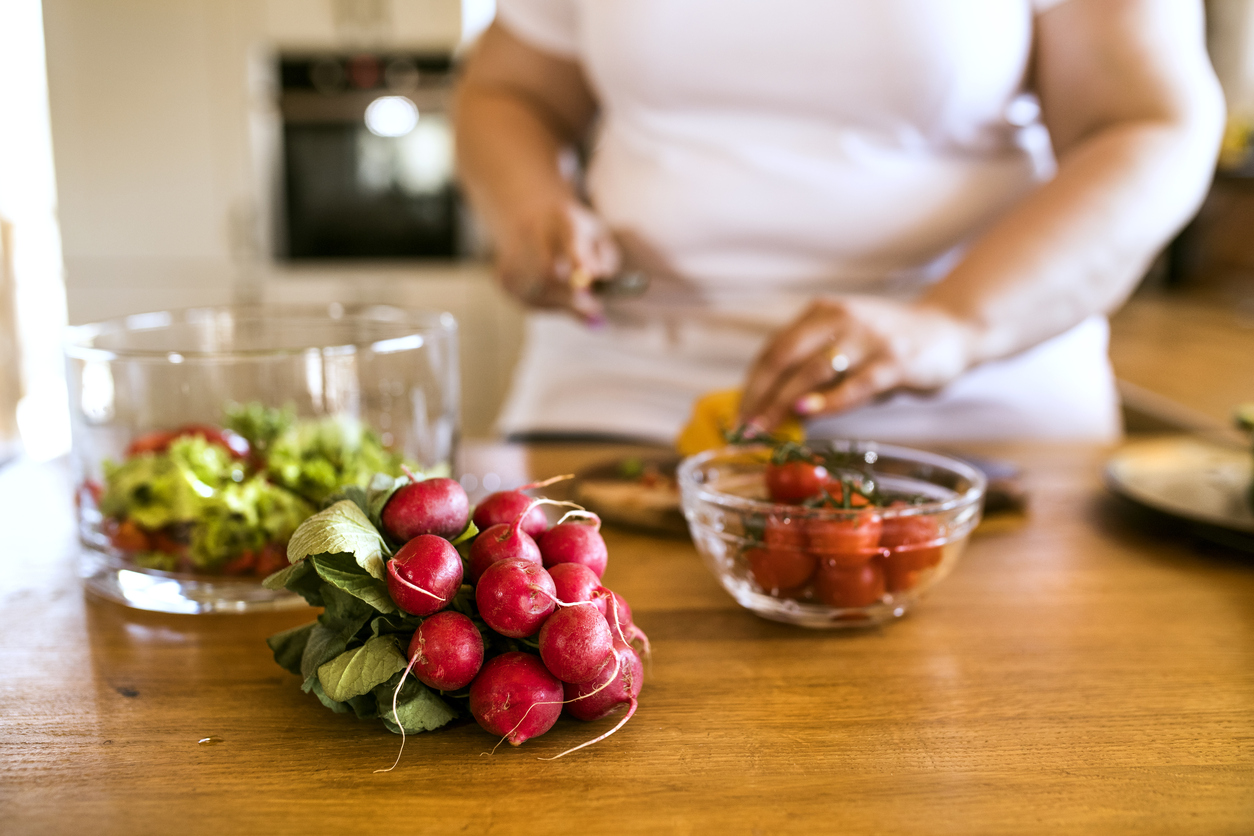-
Preparing for your supermarket trip
I always encourage my clients to plan out their meals for the week. Planning your meals and sticking to your list when shopping means you’re less likely to impulse buy foods that you didn’t initially anticipate buying – like those from the chocolate or confectionary aisle.
Another benefit is that you will likely lower your household food waste (as you’re only buying the foods you need) and save money in the process. That’s a win-win-win in my books!
Reading food labels
Deciphering food labels can be a complex task, but there are some key things to look for. Ingredients are listed in descending order of their quantity, so the highest ingredients feature in the greatest amount. Aim for a product with nutritious and natural ingredients listed first such as wholegrains, oats, nuts, fruit and milk.
Further, when reading the nutrition information panel check the ‘per 100 g’ column as this makes comparing product within the same food group more reliable. However, it is important to note that serving sizes often differ between products.
Be wary of claims such as ‘natural’ or ‘with added …’ as these can be deceptive, and don’t necessarily paint the full picture. There are no clear guidelines for these sorts of claims, so arming yourself with the knowledge and being label savvy means you can make an informed decision.
While it’s true that packaged foods can be low in nutrition, many are convenient, and if you are aware of what to look for, they can form part of a healthy diet. However, selecting mainly whole foods is a simple way to avoid the confusion of health claims.
Healthy staples to stock up on
Fruits and vegetables
The best move you can make for your health is to always include lots of fruit and vegetables in your diet. These can be used to bulk up a meal or eaten as a snack, providing a range of vitamins, minerals, phytonutrients and antioxidants. Fruit and veggies are also low in energy and packed full of fibre, to help keep you fuller for longer and keep you regular. Choosing fresh or frozen produce can be a great way to eat more of these nutritious staples in their most natural form.
Legumes and beans
These are high in dietary fibre to help promote positive bowel and heart health. They are also a great source of protein, low in saturated fat, and a low GI carbohydrate option, so they won’t cause extreme spikes in your blood sugar levels. The tinned varieties are convenient and incredibly cheap.
Dairy foods
Cheese, milk, yoghurt and kefir offer a wide array of key nutrients including vitamins A and B12, magnesium, potassium, phosphorous, protein, low GI carbs, calcium and gut-friendly bacteria. Dairy foods are a cheap source of nutrition and are incredibly versatile to use in the kitchen. Be sure to get your three serves every day and wear your milk moustache with pride.
Other worthy mentions include tofu, canned fish, wholegrain breakfast cereals, bread, wholemeal/pulse pastas and tinned tomatoes.
Canned, frozen and dried – good or bad?
Frozen fruit and vegetables are a convenient, healthy, and budget-friendly way to enjoy produce all year round. Overall, most frozen vegetables retain similar amounts of vitamins to fresh – so they’re a great alternative.
They’re also really handy to keep on hand for times when your fridge is looking a little bare – they are easy to add to meals or a quick morning smoothie.
For fruit, choosing fresh or frozen is the best way to go, as you are most likely eating the produce in its most natural form. Tinned or dried fruit can have its place in your diet, but these can often be high in sugar. For tinned varieties, choose those in natural juice and be mindful of portion sizes when consuming dried fruit – a small handful is about right.
A dietitian's guide to the supermarket


Medibank Type 2 Diabetes Program
This 12-month program includes consultations with a dietitian and a supported meal plan that aims to help eligible members achieve a healthy weight and manage their type 2 diabetes. Clinical and product eligibility criteria apply.
-
Comforting chicken noodle soup
Packed with anti-inflammatory ingredients including leek, garlic and ginger, this chicken noodle soup is hearty, full of goodness and great for any night of the week.
-
Peach salsa recipe
Zesty and unusual peach salsa recipe
-
Pineapple gingerbread crumble recipe
A summer riff on a winter classic.
-
5 festive recipes on a budget
A Christmas menu that won't break the bank.
-
Lemon and coconut bliss balls recipe
Roll up your own sweet and zesty treats.
-
5 grab-and-go lunches for work
5 convenient and inspired healthy work lunch ideas.





